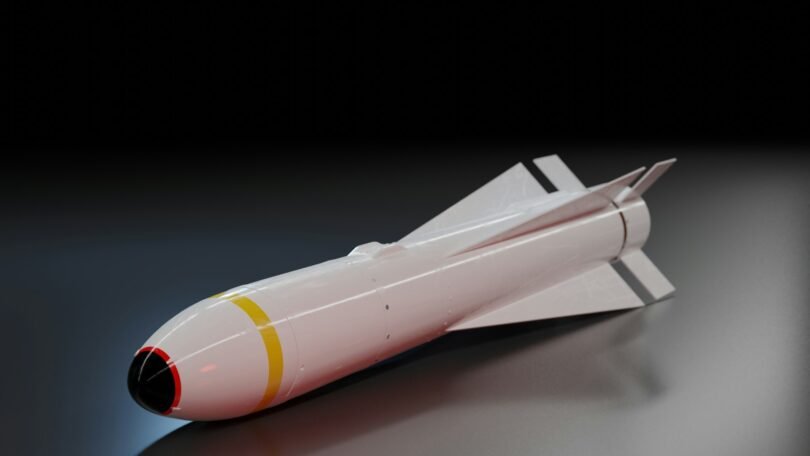Introduction
Space exploration has always been one of humanity’s greatest ambitions. From the first satellite launch in 1957 to the historic Apollo missions, each step forward has brought us closer to understanding the mysteries of the universe. However, one of the biggest obstacles in space exploration has always been the enormous cost. Traditionally, rockets were expendable—used once and discarded after launch—making each mission extremely expensive and resource-intensive.
The concept of reusable rockets is revolutionizing this model. By designing rockets that can be launched, landed, and reused multiple times, companies like SpaceX, Blue Origin, and Rocket Lab are rewriting the future of space travel. This advancement promises not only to make space exploration more cost-effective but also to accelerate humanity’s journey toward Mars, lunar bases, and even interstellar travel.
This article explores the concept of reusable rockets in depth, covering their history, technology, benefits, challenges, and the role they will play in the future of space exploration.
The Traditional Rocket Model
For decades, rockets have operated much like commercial airplanes if they were destroyed after every single flight. Each rocket launch involved building massive boosters, engines, and fuel tanks from scratch, only to use them once before they burned up in the atmosphere or crashed into the ocean.
Costly Endeavor
-
NASA’s Space Shuttle program, though partially reusable, still cost an average of $1.5 billion per launch.
-
Expendable rockets like the Saturn V (used for Apollo missions) were even more expensive and resource-heavy.
-
Each launch required years of preparation and billions of dollars in funding.
Environmental Concerns
In addition to cost, the expendable model contributed to environmental issues, such as space debris and pollution from rocket stages falling back to Earth.
The realization was clear: if space travel was ever going to become sustainable and scalable, rockets would need to be reused—just like airplanes.
The Birth of Reusable Rocket Technology
The idea of reusable rockets is not entirely new. Early visionaries like Wernher von Braun imagined spacecraft that could land back on Earth for reuse. However, the technology and engineering challenges were too great in the 20th century.
NASA’s Space Shuttle Program
The Space Shuttle, launched in 1981, was the first real attempt at reusability. The shuttle orbiter itself could be reused, and its solid rocket boosters were recovered and refurbished. However, the system was extremely complex and expensive to maintain, which limited its cost-effectiveness.
The Rise of Private Space Companies
The true revolution came in the early 21st century with the rise of private companies.
-
SpaceX, founded by Elon Musk in 2002, made reusability a central goal.
-
Blue Origin, founded by Jeff Bezos, also focused on vertical landing and reusability with its New Shepard vehicle.
-
Other companies like Rocket Lab and Sierra Nevada Corporation are following similar models.
In 2015, SpaceX made history by successfully landing the Falcon 9 rocket’s first stage back on Earth after delivering a payload into space. This was a defining moment that proved reusability was not only possible but practical.
How Reusable Rockets Work
Reusable rockets rely on advanced engineering to ensure they can withstand the extreme stresses of launch, re-entry, and landing.
Key Features
-
Vertical Landing Systems
Rockets like the Falcon 9 use grid fins and landing legs to guide themselves back to a landing pad or drone ship. -
Durable Engines
Engines such as SpaceX’s Merlin are designed to relight multiple times and survive re-entry heating. -
Precision Navigation
Advanced computer systems and GPS technology enable rockets to land within meters of their intended targets. -
Heat Protection
Reusable rockets use thermal protection systems to survive the heat of re-entry.
Types of Reusability
-
First Stage Reuse: Currently the most common, involving recovery of the main booster.
-
Second Stage Reuse: More challenging due to higher orbital speeds and heating.
-
Full Reuse: A future goal where both stages and the spacecraft are reused like an airplane.
The Advantages of Reusable Rockets
The benefits of reusability are immense and have far-reaching implications for space exploration.
1. Cost Reduction
Reusability drastically reduces launch costs.
-
The Falcon 9, for example, has reduced launch costs from $60–100 million per mission to as low as $28 million with reused boosters.
-
This cost reduction opens space access to universities, startups, and smaller nations that previously could not afford it.
2. Faster Turnaround
Reusable rockets can be refurbished and launched again in weeks or even days, compared to years required for expendable rockets.
3. Increased Launch Frequency
Cheaper and faster launches allow more missions per year, enabling rapid deployment of satellite constellations, lunar supply chains, and Mars missions.
4. Environmental Benefits
Reusing rockets reduces manufacturing waste and prevents thousands of tons of debris from falling into oceans or orbit.
5. Democratization of Space
More affordable launches mean more participation from private companies, scientists, and developing nations, leading to a more inclusive space economy.
Challenges of Reusable Rockets
While promising, reusability is not without challenges.
Technical Difficulties
-
Surviving the extreme heat and forces of re-entry requires advanced materials and engineering.
-
Landing rockets precisely is an incredibly complex task involving advanced AI and navigation.
Maintenance Costs
Although reusability saves money, refurbishing rockets between flights still requires inspection, repair, and replacement of parts, which can be expensive.
Limited Payload Capacity
Reusing rockets sometimes requires design compromises that reduce the payload capacity compared to expendable rockets.
Safety Concerns
Each reused rocket must meet strict safety standards to ensure reliability, especially for human spaceflight.
Key Players in Reusable Rocket Development
SpaceX
-
Falcon 9: The most successful reusable rocket to date, with dozens of successful landings.
-
Falcon Heavy: Uses three Falcon 9 boosters, some of which are reused.
-
Starship: A fully reusable next-generation spacecraft designed for Mars missions, capable of carrying over 100 tons of cargo.
Blue Origin
-
New Shepard: A reusable suborbital rocket designed for space tourism.
-
New Glenn: An upcoming orbital-class reusable rocket that will compete with Falcon 9 and Starship.
Rocket Lab
-
Electron: A small-lift rocket, now transitioning toward reusability with parachute and helicopter recovery methods.
Other Players
-
Sierra Nevada Corporation (Dream Chaser spacecraft).
-
United Launch Alliance (Vulcan Centaur with partial reusability).
-
China’s Long March program exploring reusability features.
Reusable Rockets and Human Spaceflight
Reusable rockets are not only for satellites but also vital for crewed missions.
International Space Station (ISS)
-
SpaceX’s Crew Dragon, launched atop a reusable Falcon 9, regularly transports astronauts to and from the ISS.
Lunar Missions
-
NASA’s Artemis program will likely rely on reusable systems like Starship for transporting cargo and astronauts to the Moon.
Mars Colonization
-
Reusability is the only way to make Mars missions affordable and scalable. A single-use rocket to Mars would cost trillions; reusable systems like Starship could cut costs dramatically.
The Role in Commercial Space Industry
Satellite Deployment
Reusable rockets are powering mega-constellations like Starlink, OneWeb, and Amazon’s Kuiper project.
Space Tourism
Companies like Blue Origin and Virgin Galactic are opening the doors to commercial spaceflight, offering short trips beyond Earth’s atmosphere.
Industrial Opportunities
In-orbit manufacturing, asteroid mining, and space-based solar power all depend on affordable reusable launches.
Read More: Reusable Rockets: The Future of Space Exploration
The Future of Reusable Rockets
Full Reusability
The ultimate goal is rockets that are fully reusable—like airplanes—where the entire system returns safely and is ready for quick turnaround. SpaceX’s Starship is the first step in this direction.
Interplanetary Travel
Reusable rockets will make missions to Mars, the Moon, and beyond financially feasible. Starship, for instance, is designed to support colonization by delivering cargo and humans repeatedly.
Global Spaceports
As launch costs fall, more spaceports will emerge around the globe, allowing frequent launches and landings.
Space Economy Growth
According to Morgan Stanley, the global space economy could grow to $1 trillion by 2040, largely driven by reusable rocket technology.
Ethical and Geopolitical Implications
Space Access for All
Reusable rockets raise questions about how space will be shared among nations, companies, and private citizens.
Militarization of Space
Lower launch costs could increase military interest in space-based weapons and defense systems.
Sustainability in Space
Ensuring that reusable rockets do not worsen space debris or pollution is crucial for long-term sustainability.
Conclusion
Reusable rockets represent one of the most groundbreaking innovations in human history. They have transformed space exploration from a prohibitively expensive endeavor into a more sustainable and scalable enterprise.
By reducing costs, increasing launch frequency, and enabling ambitious projects like Mars colonization, reusable rockets are paving the way for humanity to become a multi-planetary species. While challenges remain—technical, financial, and ethical—the trajectory is clear: the future of space exploration is reusable.
Just as the Wright brothers’ airplane revolutionized transportation in the early 20th century, reusable rockets are revolutionizing the 21st century and beyond. The dream of affordable space travel is no longer science fiction—it is rapidly becoming reality.







